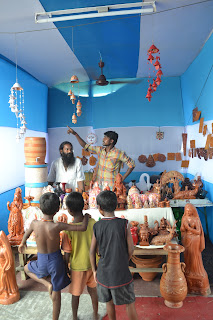“Bans Paincha”, “Bans Huncha”, the mother of the house, an
old women peeps out of the window and says “Paincha, Aunuhosh”. All across
Nepal Himalaya and some parts of East Himalaya, when a tired traveller, not
being able to pull himself anymore towards the destination, calls out from below
or above a house “Can I get a place to stay”, the usual answer is “Yes, come in
and make yourself comfortable”. Most of the houses in the area are lived by a
joint family, where the mother, who is also the grandmother, makes the decision
for the guest. If it is day time, the men of the house have gone out to work,
the children at school or playing in the nearby empty space if it is late
afternoon and the younger women in the fields.
The guest is greeted inside with some cool water to drink and
some hot black tea and Bhuteko Makai (Roasted maize grains). He is given a
place to rest and sleep towards the outside room and have to wait for the women
of the house to return and cook some food for the house and the traveller.
While the traveller leaves, he leaves some gifts or money for the family, which
usually goes to the eldest unmarried girl of the house. This is often called
locally as ‘Pewa’, where any extra money, gifts etc goes to the eldest
unmarried girl of the house and the goes with her when she leaves for her
inlaws after marriage. This wonderful homestay tradition has continued for ages
till the time tourism in the region became a main stake.
ACT or Association for Conservation and Tourism transformed
this tradition into a major livelihood for people, mainly from remote villages.
Implementing model homestays through motivation camps and making conservation
of the local natural and cultural resources through these tourism livelihoods
have become a revolution in the region. With almost 600 member homestays, ACT
has been able to give them a market linkage through Government Tourism websites
and Help Tourism websites. Help Tourism has been able to attract several volunteering
visitors and has established a new form of tourism in the region often referred
to as ‘voluntourism’.
Many points and policies have been discussed and been
included in this blog before http://chautare.blogspot.in/2011/10/homestay-policy.html.
The 02 pictures used above are from a very authentic Limboo Homestay at Hee called Barsey Jungle Camp and the 1st picture is from Arunava Das, a famous travel writer.














